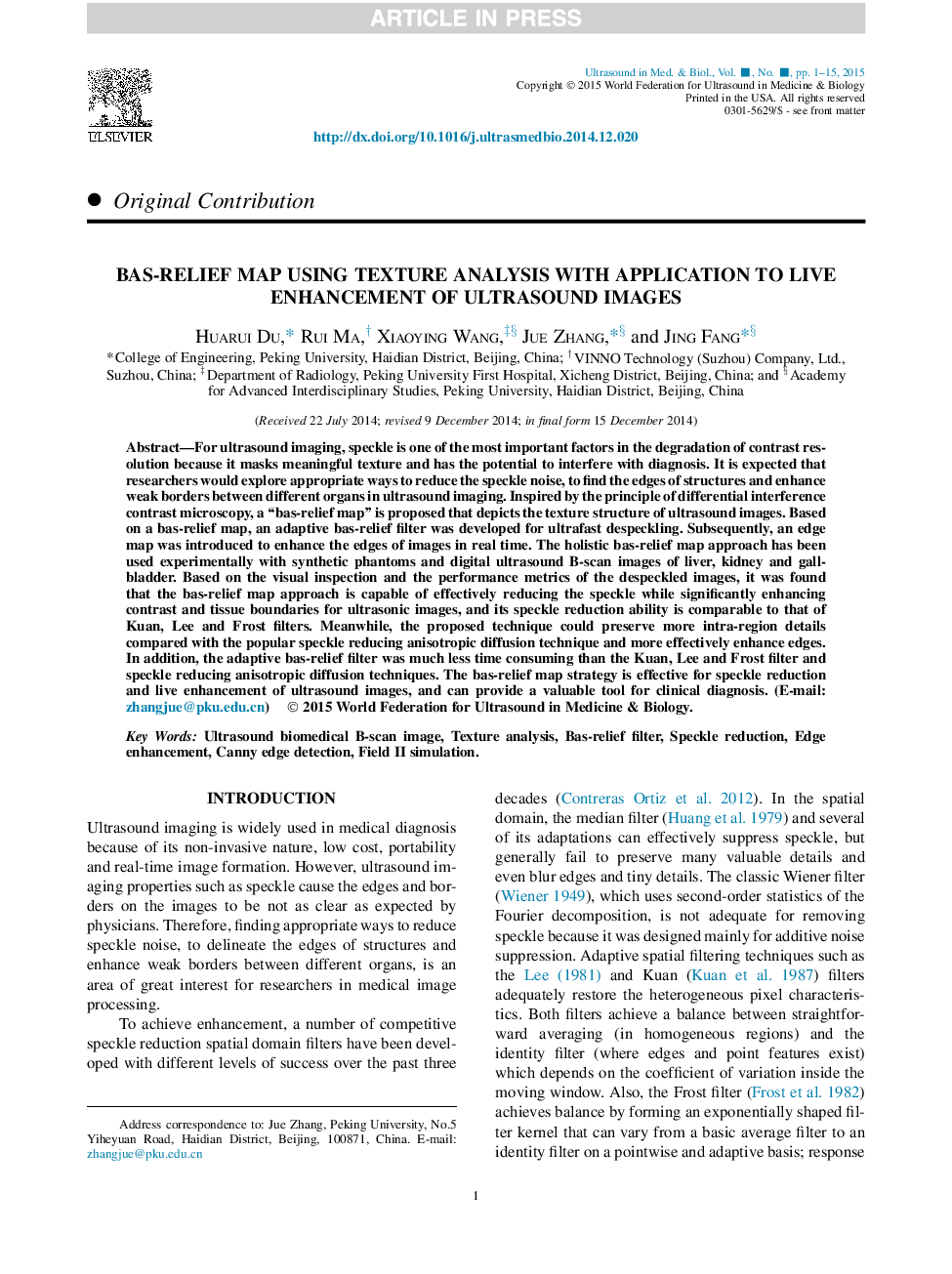| Article ID | Journal | Published Year | Pages | File Type |
|---|---|---|---|---|
| 10691458 | Ultrasound in Medicine & Biology | 2015 | 15 Pages |
Abstract
For ultrasound imaging, speckle is one of the most important factors in the degradation of contrast resolution because it masks meaningful texture and has the potential to interfere with diagnosis. It is expected that researchers would explore appropriate ways to reduce the speckle noise, to find the edges of structures and enhance weak borders between different organs in ultrasound imaging. Inspired by the principle of differential interference contrast microscopy, a “bas-relief map” is proposed that depicts the texture structure of ultrasound images. Based on a bas-relief map, an adaptive bas-relief filter was developed for ultrafast despeckling. Subsequently, an edge map was introduced to enhance the edges of images in real time. The holistic bas-relief map approach has been used experimentally with synthetic phantoms and digital ultrasound B-scan images of liver, kidney and gallbladder. Based on the visual inspection and the performance metrics of the despeckled images, it was found that the bas-relief map approach is capable of effectively reducing the speckle while significantly enhancing contrast and tissue boundaries for ultrasonic images, and its speckle reduction ability is comparable to that of Kuan, Lee and Frost filters. Meanwhile, the proposed technique could preserve more intra-region details compared with the popular speckle reducing anisotropic diffusion technique and more effectively enhance edges. In addition, the adaptive bas-relief filter was much less time consuming than the Kuan, Lee and Frost filter and speckle reducing anisotropic diffusion techniques. The bas-relief map strategy is effective for speckle reduction and live enhancement of ultrasound images, and can provide a valuable tool for clinical diagnosis.
Related Topics
Physical Sciences and Engineering
Physics and Astronomy
Acoustics and Ultrasonics
Authors
Huarui Du, Rui Ma, Xiaoying Wang, Jue Zhang, Jing Fang,
